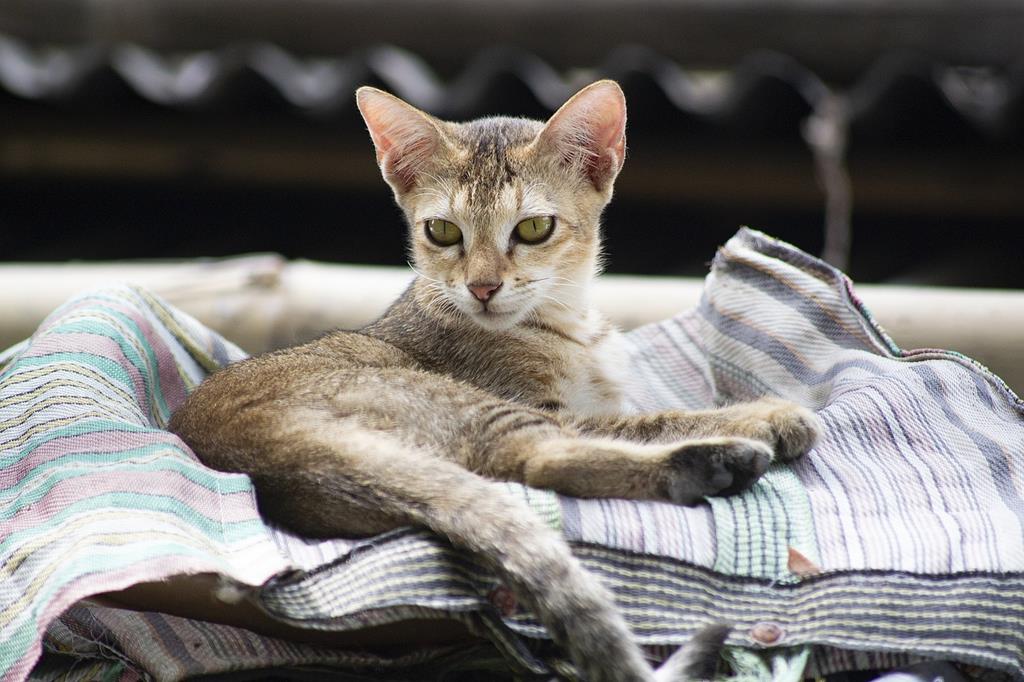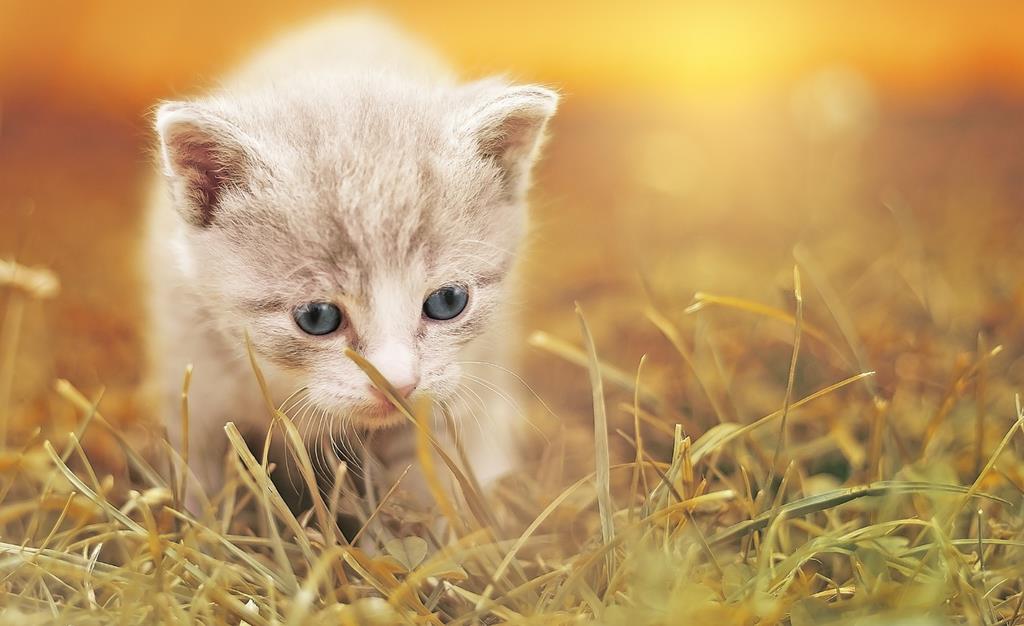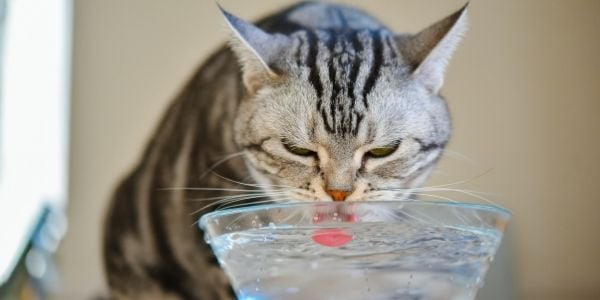Algae can grow in cat water fountains if not regularly cleaned. Its presence is a sign of poor maintenance and potential health risks.
Algae thrive in moist environments, taking advantage of sunlight and nutrients in the water to grow. They often produce a green, slimy coating that can be unappealing and possibly harmful for your cat. It is essential to keep your cat’s water fountain clean to prevent algae build-up.
Regular cleaning disrupts algae’s growing conditions, protecting your cat’s health and ensuring the water remains fresh. Utilizing a water fountain for cats encourages hydration with a constant flow of water, but neglecting proper care can lead to algae deposits. Addressing this issue promptly will maintain the health benefits that water fountains can offer to cats. Cleanliness in the fountain also ensures the longevity of the device and a pleasant drinking experience for your feline friend.
Credit: www.quora.com
The Algae Problem In Cat Water Fountains
Think your cat’s water fountain is the purr-fect way to keep them hydrated? Think again. Algae in these fountains can turn your pet’s drinking source into a green nightmare.
Continuous water circulation may seem ideal for freshness, but it can also lead to unwanted algae growth. It’s not just about murky waters — algae can harm your furry friend. Don’t fret! Recognizing and managing algae is simple with the right knowledge.
Identifying Algae in Your Cat’s FountainIdentifying Algae In Your Cat’s Fountain
Spotting algae isn’t always straightforward. Look for a slimy texture or green tinge on surfaces. Your cat might also be avoiding the fountain, a sign that something’s not right. Use your senses, and trust them if something seems off.
Check:
- The water’s color
- The fountain’s corners and hidden spots
- Any odd smells
Reasons Algae Thrive In Pet Water Sources
Algae don’t need much to set up camp in your cat’s fountain. Warmth, light, and nutrients can turn it into algae’s paradise.
| Condition | Why It Attracts Algae |
|---|---|
| Nutrients | Cat saliva is full of goodies for algae. |
| Light | Direct sunlight is algae’s best friend. |
| Warmth | Higher temperatures accelerate growth. |
Understanding these factors helps strike at the heart of the issue. Regular cleaning and proper placement of the fountain are key to a clean drinking space.
Health Risks Of Algae To Cats
Cats love fresh water from their fountains. But algae can turn a refreshing drink into a health hazard. Understanding the risks algae pose to cats is crucial for their well-being.
Effects Of Algae Consumption On Feline Health
Not all algae are harmful, but certain types can affect a cat’s health if consumed. Here’s what pet owners should know:
- Toxins in algae can cause sickness, leading to symptoms like vomiting, diarrhea, and lethargy in cats.
- Blue-green algae, in particular, are dangerous and potentially fatal if ingested.
- Regular cleaning of water fountains prevents algae growth and protects cats.
The Connection Between Algae And Feline Diseases
Continuous exposure to algae can lead to serious health issues in felines:
| Disease | Cause |
|---|---|
| Liver damage | Long-term toxin exposure |
| Neurological problems | Neurotoxins from certain algae |
Cats with underlying health issues face greater risk. Always ensure their water source is clean and safe.
Preventive Measures To Reduce Algae Growth
Algae growth in a cat water fountain is not only unsightly, but it can also be harmful to your pet’s health. To keep your cat’s water fresh and clean, implementing preventive measures is crucial. A few simple steps can make a huge difference in maintaining an algae-free fountain for your feline friend.
Regular Cleaning Routines
Maintaining a regular cleaning schedule is the key to preventing algae buildup. It is essential to empty and clean the entire fountain at least once a week. Use a non-toxic cleaner or a mixture of water and vinegar for an effective and pet-safe cleaning solution. Scrub all parts, including the pump, to remove any algae or biofilm that may have started to form.
- Weekly fountain breakdown and cleaning
- Use brush or sponge to scrub components
- Rinse thoroughly to remove all cleaning agents
Choice Of Fountain Material
The material of your cat’s water fountain can affect algae growth. Aluminum, stainless steel, or ceramic options are less prone to algae buildup, unlike plastic fountains. These materials are more resistant to scratches where algae can lodge and grow. Always choose a non-porous material for easier cleaning and better durability.
| Material Type | Algae Resistance | Easy to Clean |
|---|---|---|
| Stainless Steel | High | Yes |
| Ceramic | High | Yes |
| Plastic | Low | Less so |
Remember, a clean water source encourages your cat to drink more, promoting good hydration and overall health. By following these preventative measures, you can ensure your cat has access to clean water at all times.

Credit: www.amazon.com
Natural Remedies And Solutions
Algae in your cat’s water fountain might startle you. It is important to keep the water clean. Luckily, natural remedies and solutions can help maintain a fresh environment for your furry friend without using harsh chemicals.
Safe Additives To Discourage Algae
Safe and natural additives can help keep algae at bay. Let’s explore options you can easily add to your cat’s water fountain.
- Apple Cider Vinegar: A few drops make the water acidic, inhibiting algae growth. Use a small amount to avoid affecting the taste.
- Chlorophyll: As a plant extract, chlorophyll is non-toxic and can help control algae—add according to the product instructions.
Diy Algae Prevention Techniques
Do-it-yourself methods are easy to follow and highly effective for preventing algae. Implement these techniques to keep the fountain clean:
- Regular Cleaning: Disassemble the fountain and scrub all parts weekly.
- Adequate Sunlight: Place the fountain away from direct sunlight, where algae thrive.
- Filtered Water: Use filtered water to reduce the nutrients algae need.
Advanced Purification Tactics For Cat Owners
Attention cat owners! If you’ve ever spotted algae in your cat’s water fountain, you know it’s a sign to up your purification game. Keeping your feline’s water clean is crucial for their health, and there are some top-notch methods to do just that. Let’s explore how you can keep the water fresh and clear, making it irresistible for your kitty to stay hydrated.
Investing In Uv Sterilizers
One of the smartest moves you can make for your cat’s health is investing in UV sterilizers. These nifty devices use ultraviolet light to zap away nasty algae and germs. It’s simple:
- Install the sterilizer in your cat’s fountain.
- Watch as it disrupts the algae’s DNA.
- Enjoy cleaner water, without using chemicals.
The Role Of Water Filtration Systems
Water filtration systems play a big part in keeping your cat’s water pure. These systems often have multiple stages:
| Stage | Action | Benefit |
|---|---|---|
| 1. | Mechanical Filter | Catches debris |
| 2. | Carbon Filter | Removes odors |
| 3. | Ion-Exchange | Softens water |
By choosing the right filtration system, you ensure your cat enjoys fresh water daily. Remember, clean water means a happy, hydrated, and healthy cat!
When To Seek Professional Help
Algae growth in your cat’s water fountain is not just unsightly—it can also pose health risks. While regular cleaning can prevent the build-up, it’s essential to recognize when a professional’s input is needed. This can be the case if your cat shows signs of illness or if the algae return despite thorough cleaning. Read on to find out about the red flags that signal it’s time to seek veterinary advice.
Signs Your Cat May Be Affected By Contaminated Water
Keep a close watch for any of these symptoms:
- Change in drinking habits – less interest in water.
- Gastrointestinal upset – vomiting or diarrhea.
- Lethargy – less active than usual.
- Change in coat quality – becomes dull or matted.
These signs can indicate that your furry friend is feeling unwell due to poor water quality.
Consulting A Vet About Algae-related Issues
If you spot any of the above symptoms or suspect that the water may be compromised by algae, contact your vet promptly. They may suggest:
- Water testing – to determine contamination.
- Physical examination – checking your cat’s health.
- Dietary advice – to support recovery.
- Treatment plans – if algae have impacted your cat’s health.
Take swift action to ensure your cat stays healthy and hydrated.

Credit: www.ebay.com
Frequently Asked Questions For Algae In Cat Water Fountain
What Causes Algae Growth In Cat Fountains?
Algae thrive in environments with light, water, and nutrients. Cat water fountains, if not cleaned regularly, provide these conditions. Regular maintenance and reducing light exposure can prevent algae growth.
How Do I Clean Algae From A Cat Fountain?
To clean algae from a cat fountain, disassemble the unit. Scrub all parts with a mixture of white vinegar and water. Rinse thoroughly before refilling with fresh water. Always follow the manufacturer’s instructions.
Can Algae In Water Fountains Harm My Cat?
Some algae can produce toxins harmful to cats if ingested. Regular fountain cleaning minimizes algae buildup, keeping the water safe for your pet. Consult a vet if you notice changes in your cat’s behavior or health.
How Often Should I Clean My Cat’s Water Fountain?
Clean your cat’s water fountain every two weeks. Replace the water and perform a deep clean once a month. This prevents algae and keeps the water fresh and clean for your pet.
Conclusion
Algae growth in your cat’s water fountain can cause more harm than a simple eyesore. Regular cleaning and maintenance ensure your feline friend stays hydrated with fresh, clean water. Embrace these simple steps to protect your pet’s health and keep their drinking source pristine.
Remember, a clean fountain is the cornerstone of your cat’s well-being.



